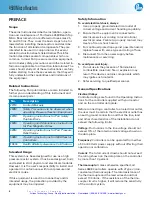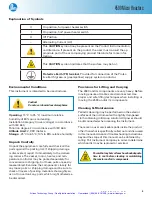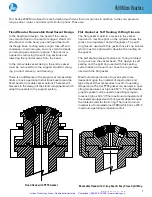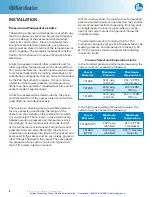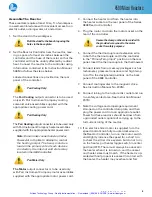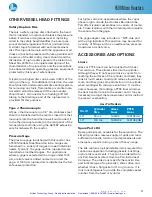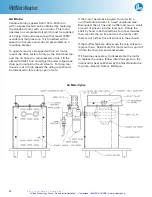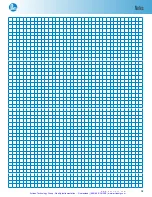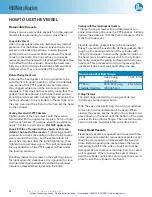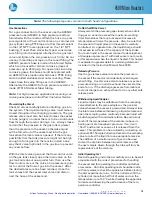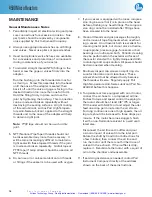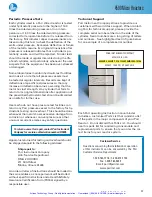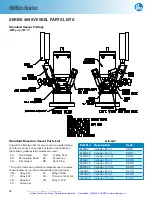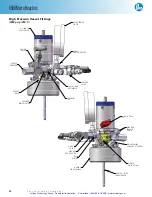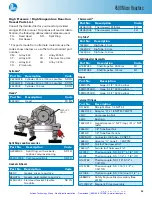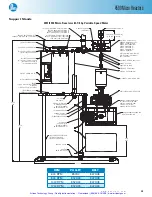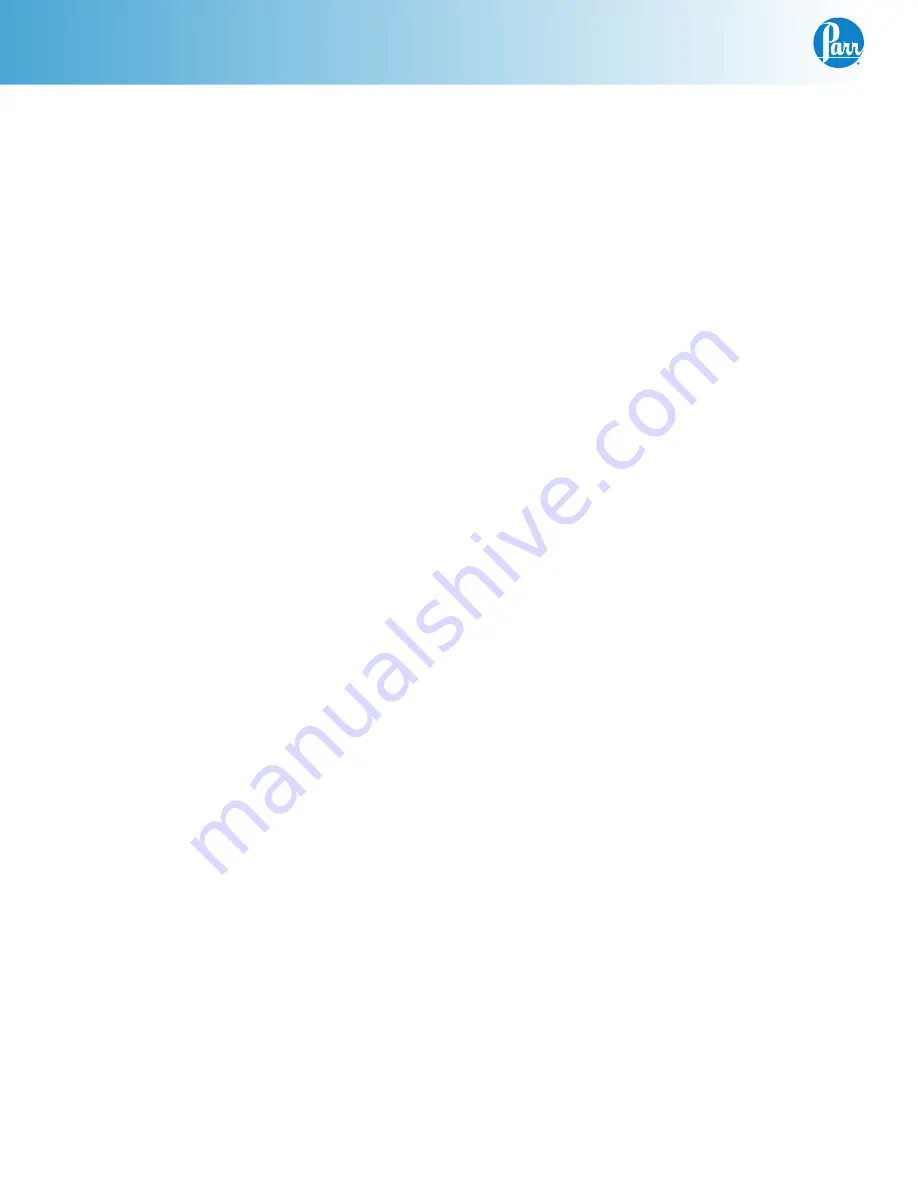
4590 Micro Reactors
P a r r I n s t r u m e n t C o m p a n y
16
MAINTENANCE
General Maintenance Notes
1. Periodically inspect all electrical wiring and pres-
sure connections for excessive corrosion. Sus-
pect parts should be replaced by components
only supplied by Parr Instrument Company.
2. Always use appropriate wrenches on all fittings
and valves. Never use pliers or pipe wrenches.
3. Head and cylinder service fixtures are available
for convenience and protection of components
during maintenance of your reactor.
4. To reinstall straight thread (NPS) fittings to the
head, screw the gage or valves firmly into the
adapter.
Run the bushing onto the threaded stem as far
as it will go. Screw this assembly into the head
until the nose of the adapter is seated; then
back it off until the valve or gage is facing in the
desired direction (no more than one full turn).
Hold the fitting firmly in place and close the
joint by tightening the bushing. This connection
can be made and broken repeatedly without
destroying the sealing surfaces. A light coating
of thread lubricant, such as Parr High Tempera-
ture Anti-Seize Lubricant, applied to the straight
threads and to the nose of the adapter will help
to obtain a tight joint.
Note:
PTFE tape should not be used on this
joint.
5. NPT (National Pipe Taper) threads should not
be disassembled any more than necessary. It
will become increasingly difficult to maintain a
tight seal with these tapered threads if the joint
is made and broken repeatedly. Grafoil tape or
PTFE tape (if temp allows) should be used on all
NPT threads.
6. Do not use oil or anti-seize lubricant on threads
or fittings if the vessel is to be used with oxygen.
7. If your vessel is equipped with a loose compres-
sion ring be sure that it is in place on the head
before attaching any head fittings. The compres-
sion ring cannot be installed after fittings have
been screwed into the head.
8. Clean all threads and gas passages thoroughly
and remove all tape fragments when overhaul-
ing a vessel. An ultrasonic bath is excellent for
cleaning metal parts, but do not place a thermo-
couple probe, pressure gage, face seals or ball
bearings in an ultrasonic bath. Periodic cleaning
may be performed on the exterior surfaces of
the reactor stand with a lightly dampened cloth
containing mild soap solution. All power should
be disconnected when cleaning.
9. Routinely inspect cap screws on split ring clo-
sure for lubrication and cleanliness. These
screws should not be allowed to dry because
the threads will seize. Regularly apply Parr
High Temperature Anti-Seize Lubricant (Parr No.
424HC2) before this happens.
10. To operate reactors equipped with an air motor,
connect the air hose to a compressed air line.
For best torque and speed control the piping to
the motor should be at least 3/8” IPS or larger.
Fill the oiler with SAE 10 oil and adjust the oiler
feed one drop per minute into the air stream.
For long continuous runs at high speeds, the oil-
ing rate should be increased to three drops per
minute. If the motor becomes sluggish, flush
it with a non-flammable solvent in a well venti-
lated area.
Disconnect the air line and muffler and pour
a small amount of solvent into the inlet port.
Rotate the shaft by hand in both directions for
a few minutes; then connect the air line and
run the motor until there is not further trace of
solvent in the exhaust. If the muffler is dirty,
replace it. Relubricate the motor with a squirt of
oil into the chamber and reassemble.
11. If servicing assistance is needed, contact Parr
Instrument Company directly at the address
shown on the back of these instructions.
Artisan Technology Group - Quality Instrumentation ... Guaranteed | (888) 88-SOURCE | www.artisantg.com



